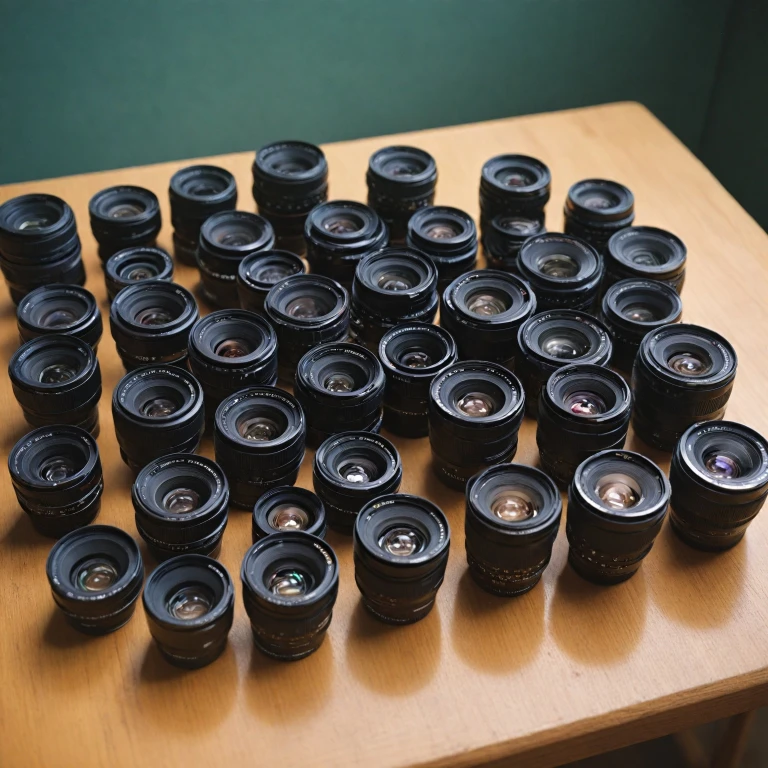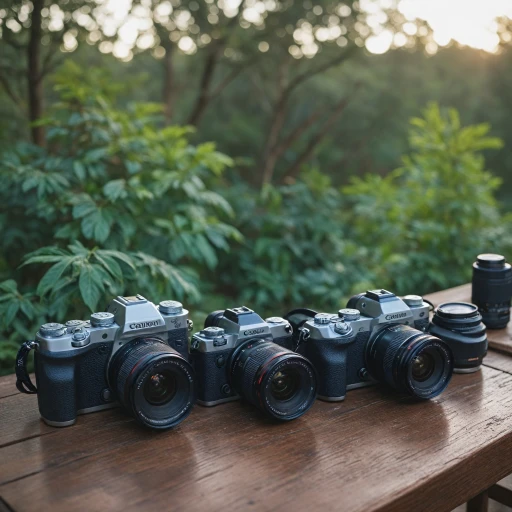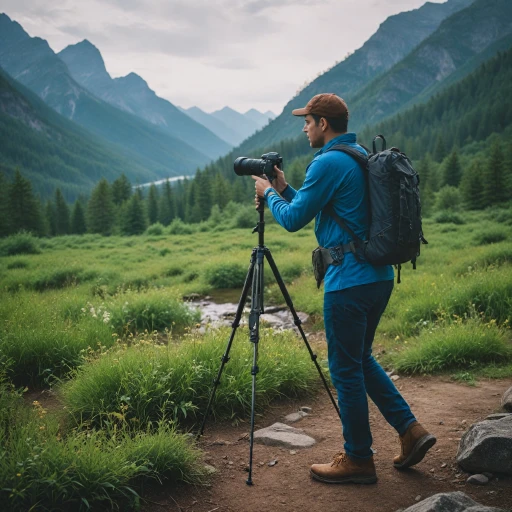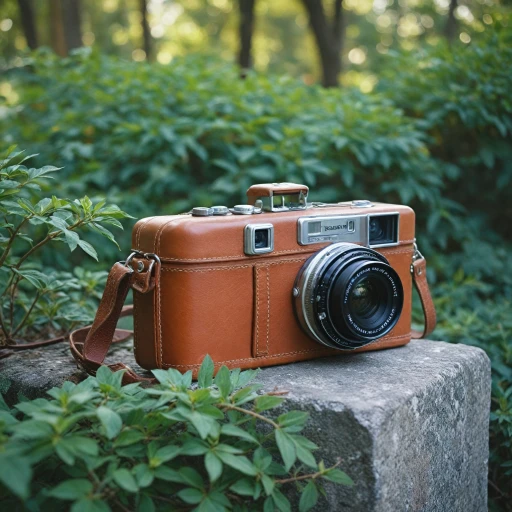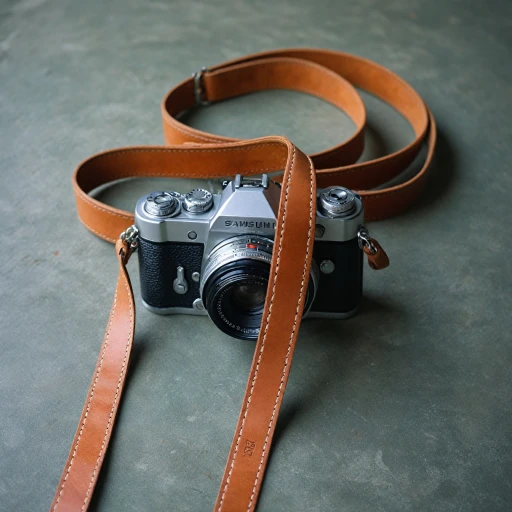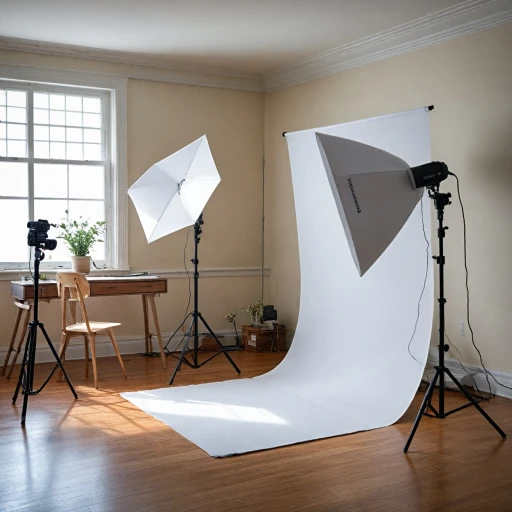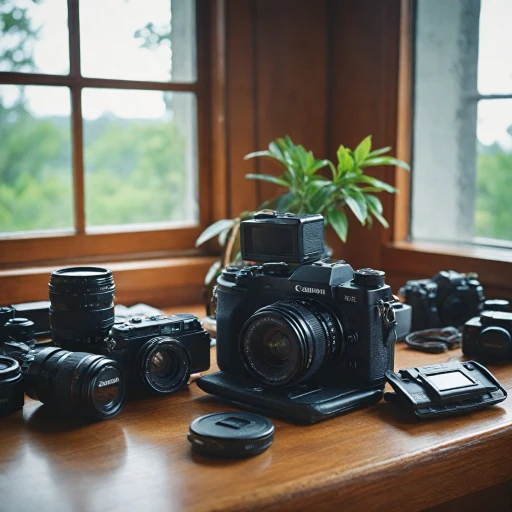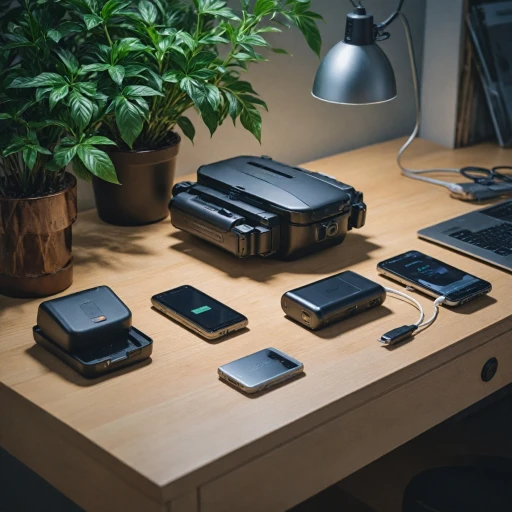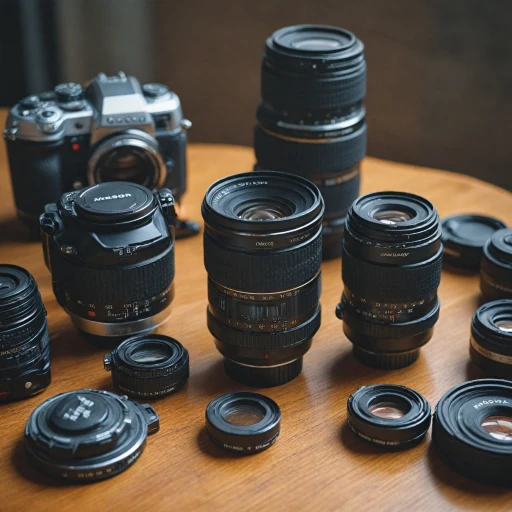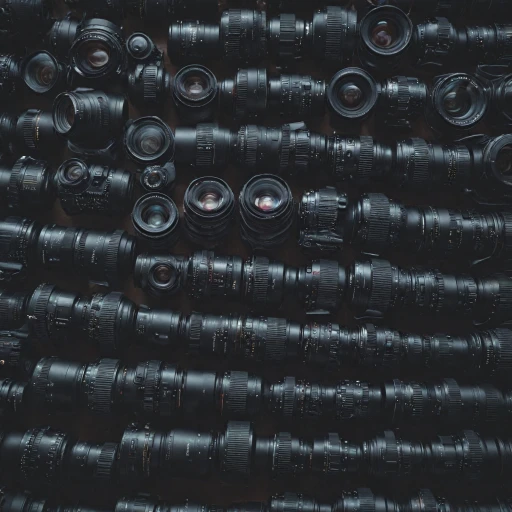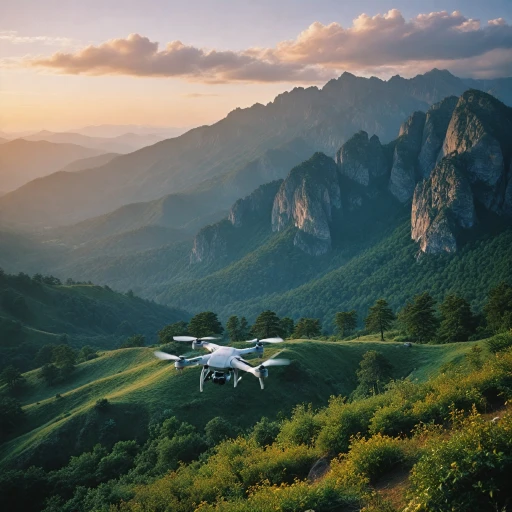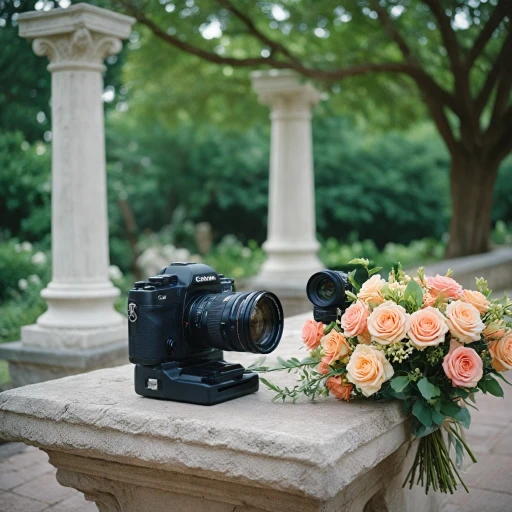
Understanding Sony APS-C Cameras
The Appeal of Sony APS-C Cameras
Sony APS-C cameras have gained a solid reputation among both amateur and professional videographers. These cameras offer a compact size without compromising on quality, making them highly versatile and suitable for a variety of shooting conditions. One of the key advantages is the lens mount compatibility, which allows users to pair these cameras with a wide range of lenses for enhanced video and photography experiences.
The APS-C sensor size is smaller than full-frame but provides the advantage of a wider field of view and greater depth when it comes to focus and image quality. This makes APS-C cameras ideal for creating cinematic shots while still maintaining portability.
Why Lens Choice Matters
Choosing the right lens for your Sony APS-C camera is crucial to enhancing your video output. Different types of lenses, ranging from zoom to prime, offer a variety of focal lengths and apertures that cater to specific needs, whether it be wide-angle shots or close-ups.
While wide-angle lenses are perfect for capturing dynamic scenes, prime lenses deliver the best image quality for cinematic shots. On the other hand, zoom lenses provide the flexibility needed for versatile shooting situations.
Consideration in Your Lens Selection
When selecting a lens, consider factors such as aperture, frame coverage, and mounting compatibility. Brands like Sigma and Sony offer some of the best lenses in the market, known for their high-quality cls and focal length options. Whether your focus is manual or automatic, it's crucial to ensure that your lens can meet your photography and video needs.
If you're exploring how different lenses can benefit your photography, you may also want to explore lens adapters to further expand your camera's versatility.
Key Features to Look for in Video Lenses
Essential Features for Video Lenses
When diving into the world of video lenses for Sony APS-C cameras, it's crucial to understand the key features that can significantly impact your video quality. Whether you're a seasoned videographer or just starting, knowing what to look for in a lens can make all the difference in your projects.
Aperture and Low Light Performance
The aperture of a lens determines how much light it can gather, which is vital for shooting in low-light conditions. A lens with a wide aperture (e.g., f/1.8 or f/2.8) allows more light to hit the camera sensor, resulting in better performance in dim environments. This feature is particularly important for achieving a cinematic look with shallow depth of field, where your subject is in sharp focus against a beautifully blurred background.
Focal Length and Versatility
Focal length is another critical aspect to consider. It determines the field of view and how much of the scene will be captured. Wide-angle lenses are great for capturing expansive scenes or working in tight spaces, while prime lenses offer superior image quality and are ideal for cinematic shots. For those who need flexibility, a zoom lens provides the ability to switch between different focal lengths without changing lenses, making it a versatile choice for various shooting scenarios.
Focus Mechanism
Autofocus capabilities are essential for video work, especially when shooting moving subjects. Look for lenses with fast and accurate autofocus systems, such as those with Sony's OSS (Optical SteadyShot) technology, which helps reduce camera shake. For those who prefer manual focus, ensure the lens offers smooth and precise control to achieve the desired focus effect.
Build Quality and Mount Compatibility
Durability is a key consideration, particularly if you plan to shoot in challenging environments. Lenses with robust build quality, weather sealing, and reliable mounts are crucial for long-term use. Ensure the lens is compatible with your Sony APS-C camera mount to avoid any compatibility issues.
Price and Value
While high-end lenses offer exceptional performance, there are budget-friendly options that provide excellent value without compromising too much on quality. It's important to balance your needs with your budget to find the best lens for your specific requirements. For more insights on enhancing your photography setup, consider exploring the right camera adapter to expand your lens options.
Top Picks for Wide-Angle Lenses
Highly Rated Wide-Angle Lenses for Your APS-C Sony Camera
When it comes to capturing expansive views or delivering a unique perspective, wide-angle lenses are a popular choice among photographers and videographers using Sony APS-C cameras. Their ability to encompass more of the scene makes them invaluable in various scenarios. Here's a look at some of the standouts in this category:- Sigma 16mm f/1.4 DC DN - This lens offers a combination of speed, compactness, and excellent image quality. With a wide aperture of f/1.4, it’s adept in low-light conditions and provides impressive bokeh, making it a favorite for both photography and video work.
- Sony E 10-18mm f/4 OSS - As one of the versatile zoom lenses, this Sony OSS model includes optical stabilization, which is a major plus for stable handheld shooting. It’s great for landscapes, architecture, and interiors, where you want to maximize the field of view.
- Rokinon 12mm f/2.0 NCS CS - Known for its excellent price-to-performance ratio, this lens is perfect for those who prefer manual focus and desire control over the shot's artistic aspects. Its ultra wide perspective is ideal for astrophotography and environmental portraits.
Best Prime Lenses for Cinematic Shots
Prime Lenses for Cinematic Excellence
When it comes to achieving that cinematic look in your videos, prime lenses are often the go-to choice for many filmmakers and videographers. These lenses are known for their fixed focal lengths, which typically offer superior image quality and a wider aperture compared to zoom lenses. This allows for stunning depth of field and exceptional low-light performance, making them ideal for artistic shots.
For Sony APS-C cameras, there are several prime lenses that stand out due to their performance and versatility. Here are some top picks:
- Sigma 30mm f/1.4 DC DN: This lens is a favorite among many due to its fast aperture and sharp image quality. It’s perfect for low-light situations and provides a beautiful bokeh effect, making it a great choice for portrait and cinematic shots.
- Sony E 50mm f/1.8 OSS: Known for its optical steady shot (OSS) feature, this lens is excellent for handheld shooting. The 50mm focal length is versatile, offering a natural perspective that’s great for both video and photography.
- Sony E 35mm f/1.8 OSS: This lens is compact and lightweight, making it ideal for on-the-go shooting. Its wide aperture and OSS make it a solid choice for capturing high-quality video in various lighting conditions.
When selecting a prime lens, consider the type of shots you aim to capture and the environments you’ll be shooting in. The right lens can significantly enhance your video’s storytelling by providing clarity, focus, and a professional look.
Zoom Lenses for Versatile Shooting
Adaptable Optics for Every Scene
In the realm of Sony APS-C cameras, zoom lenses stand out as a versatile tool for photographers and videographers alike, providing the flexibility to capture diverse scenes without the need to switch lenses. These lenses are essential in enabling seamless transitions from one shot to another, maintaining consistent image quality throughout.
When choosing a zoom lens, compatibility with the Sony E-mount system is crucial, ensuring optimal functionality and ease of use. Here are a few considerations to keep in mind:
- Focal Length Range: Look for lenses that offer a broad range of focal lengths, enhancing your ability to shoot both wide-angle and telephoto perspectives. This versatility makes them perfect for dynamic environments where quick adjustments are necessary.
- Aperture Settings: A zoom lens with a constant maximum aperture, such as f/2.8, provides consistent exposure and creative control. This is particularly useful in a variety of lighting conditions, ensuring smooth transitions between shallow and deep depth of field.
- Image Stabilization: Features like Sony OSS (Optical SteadyShot) significantly reduce camera shake, which is vital for handheld shooting scenarios and achieving high-quality video content.
- Focus System: Consider lenses with fast and quiet autofocus systems. Advanced technologies provide swift focus adjustments, which are indispensable for both photography and videography.
Among the widely recommended options, consider the Sigma APS-C series, known for delivering sharp image quality and robust build. Similarly, Sony’s G Master line offers exceptional optical performance that meets professional standards.
The price of these lenses can vary, so it’s advisable to check prices and reviews before making a purchase. Reading a detailed review sony can provide valuable insights into real-world performance.
Budget-Friendly Options
Affordable Choices That Deliver
When you're on a budget but still want to capture high-quality video with your Sony APS-C camera, there are several cost-effective lenses that maintain a good balance between price and performance.- Sony 16-50mm f/3.5-5.6 OSS: This compact zoom lens is a great start for those looking to keep the expenses low without sacrificing the image quality. With its built-in optical stabilization, it helps in reducing camera shake, which is especially useful for handheld video shooting.
- Sigma 30mm f/1.4 DC DN: For those focusing on primes, this lens offers a wide aperture that makes it ideal for low-light conditions and creating beautiful bokeh effects. It's a solid choice for achieving cinematic shots without breaking the bank.
- Sigma 18-50mm f/2.8 DC DN: If you want a standard zoom with a constant aperture, this lens provides versatility in various shooting scenarios. It's lightweight and compact, making it easy to carry around for spontaneous video captures.
- Rokinon 12mm f/2.0 NCS CS: When you need an ultra-wide-angle lens for dramatic perspectives, this manual focus lens is highly praised for its clarity and ability to shoot stunning videos. Despite its manual nature, it allows photographers to precisely adjust focus and aperture for creative freedom.
